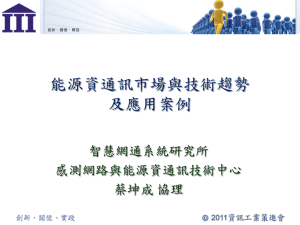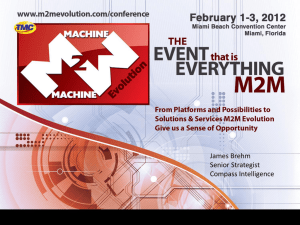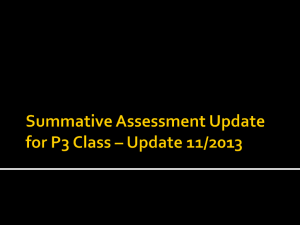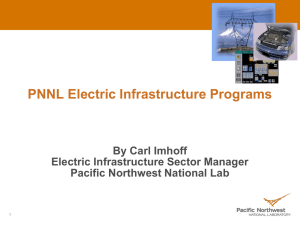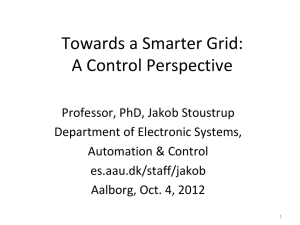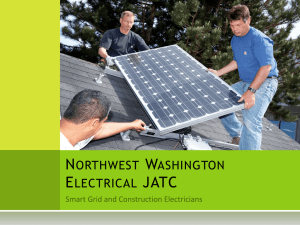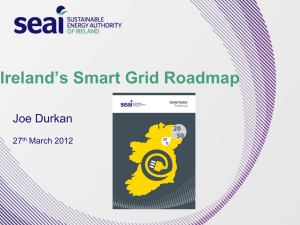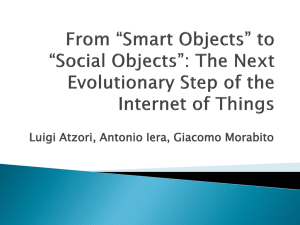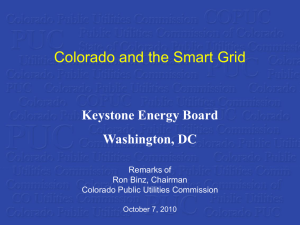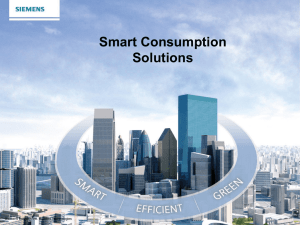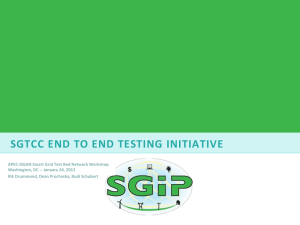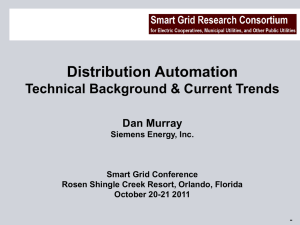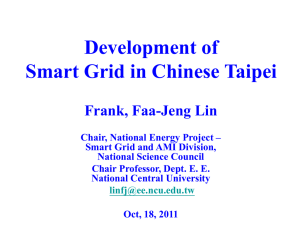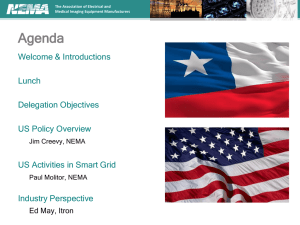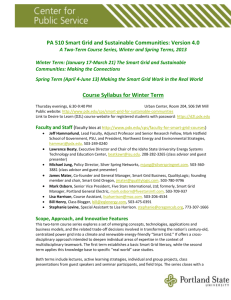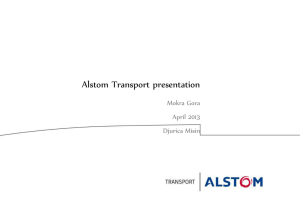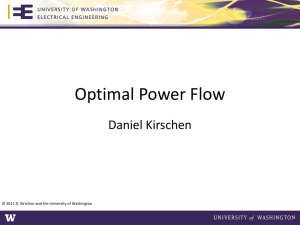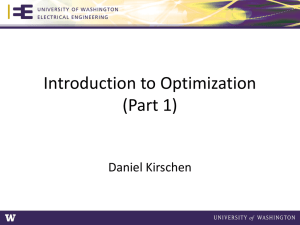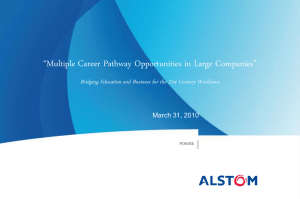Symposium Overview: Why are We Here Today?
advertisement
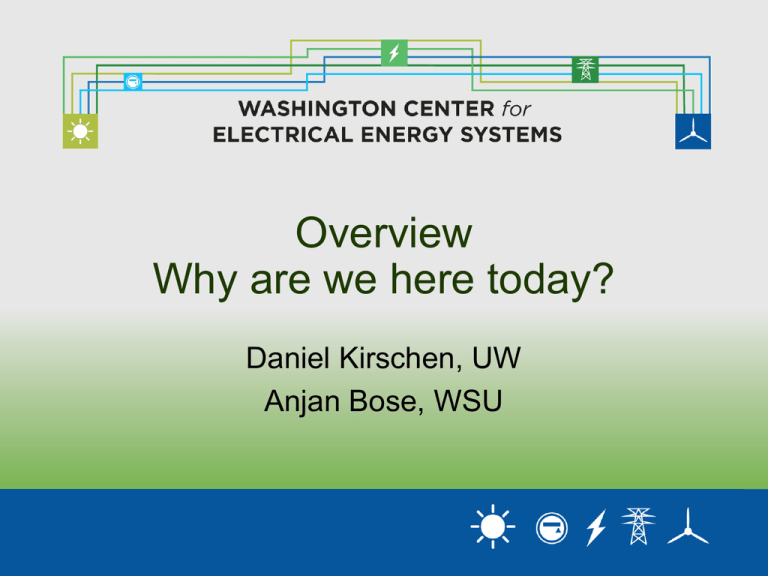
Overview Why are we here today? Daniel Kirschen, UW Anjan Bose, WSU Demand pull: Integration of renewables Electric vehicles Aging assets Large blackouts Technology push: Wireless communications Sensors (PMUs, Smart meters) Controls (FACTS, SIPS) Ubiquitous computing Smart Grid Very appealing concept Many interesting ideas Lots of activity around the world But needs for more definition How do we put it all together to get more efficiency, more reliability, less carbon? What does it mean for WA State? Challenge Our power system is stressed Need to develop a comprehensive solution Continue providing cheap, reliable and green electricity Opportunity Use our competitive advantages Work together Move fast Sell our solutions to the world Electric utilities Tradition of innovation Technology Integration of renewables Energy efficiency and conservation Cooperative planning process Building more heavy infrastructure is not always the answer Combine with more IT infrastructure for better monitoring, control and decision-making Technology companies Power sector Schweitzer, Alstom, Itron, … Information technology Microsoft, Boeing, … Energy sector startups Demand Energy, PowerIT Solutions, Optimum Energy, Distributed Energy Management, Grid Mobility, enerG2, FlyBack Energy, PCS UtiliData, Clarian Power, Demand Energy, IncSys, … Research Pacific Northwest National Lab Very active in various aspects of smart grids Washington State University and University of Washington Established programs in electrical energy and power systems Substantial investment in new faculty members WACEES Joint initiative of UW and WSU Steering committee of representatives from industry and government Help develop a regional strategy for smart grid Build on the expertise in system issues from the two institutions Plans Provide a forum for non-commercial discussions Provide neutral expertise on the issues Bring expertise from other fields into the discussion Help bridge the gap between energy and IT communities Lead research projects involving regional partners Provide a suitably educated engineering work force Existing activities (1): DOE Smart Grid Workforce training grant Develop a set of undergrad/grad courses Suitable for training/retraining in the technologies for the 21st century grid Suitable for working engineers Asynchronous on-line courses Leads to Certificates or Professional MS Existing activities (1): DOE Smart Grid Workforce training grant WSU main contractor WSU and UW main developer of courses With BPA, PNNL, Alstom, IncSys Industry Advisory Board Providing more than advice Matching cost-share First students and feedback for courses Continuity after end of 3-year project Existing activities (2): $178M DOE grant led by Battelle, involving BPA and 12 regional utilities 5 vendors WSU and UW Existing activities (2):Pacific Northwest Smart Grid Demonstration Project UW participation: Deployment of advanced metering on campus Load and generation response to signals from PNNL WSU participation: partner in Avista Smart Pullman project WSU campus as smart microgrid Smart house on campus Analysis of 15000 smart meter data Efficiency/reliability metrics for automation Agenda (1) Keynote Patricia Hoffman, Assistant Secretary for the Office of Electricity Delivery and Energy Reliability, DOE Perspective from the other Washington How will Federal policy affect the Pacific Northwest? Agenda (2) Vision Steve Klein, Snohomish PUD Utility perspective Mike Atkinson, Alstom Grid Technology provider perspective How can we leverage the utility and technology expertise that exists in WA State? Agenda (3) Research Carl Imhoff, PNNL Daniel Kirschen, UW Research agendas of universities and PNNL Are we addressing the right questions? Agenda (4) Commercialization Ed Schweitzer, SEL Rogers Weed, WA Commerce Department Translating research into economic benefits Agenda (5) Wrap-up Any further suggestions on what WACEES should do and how it should do it?
